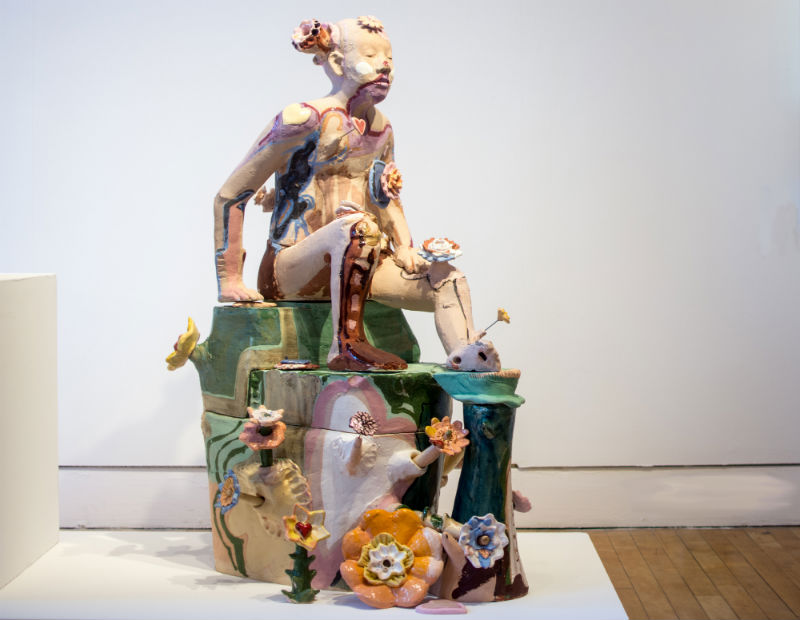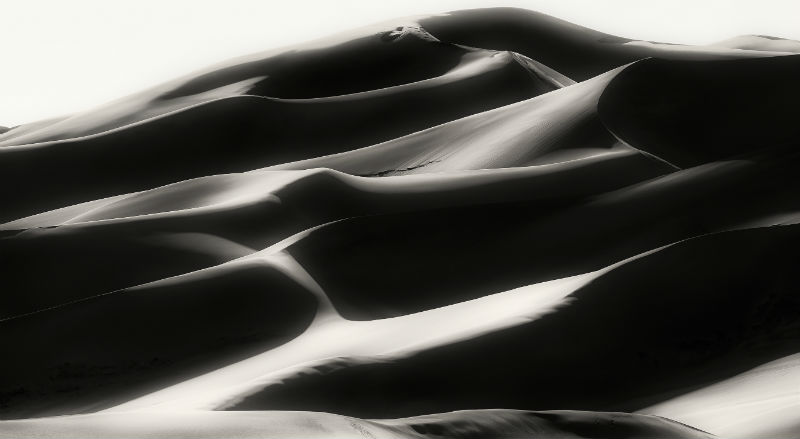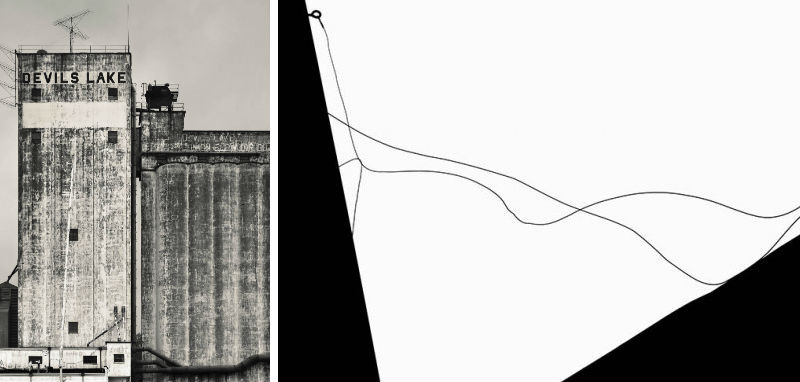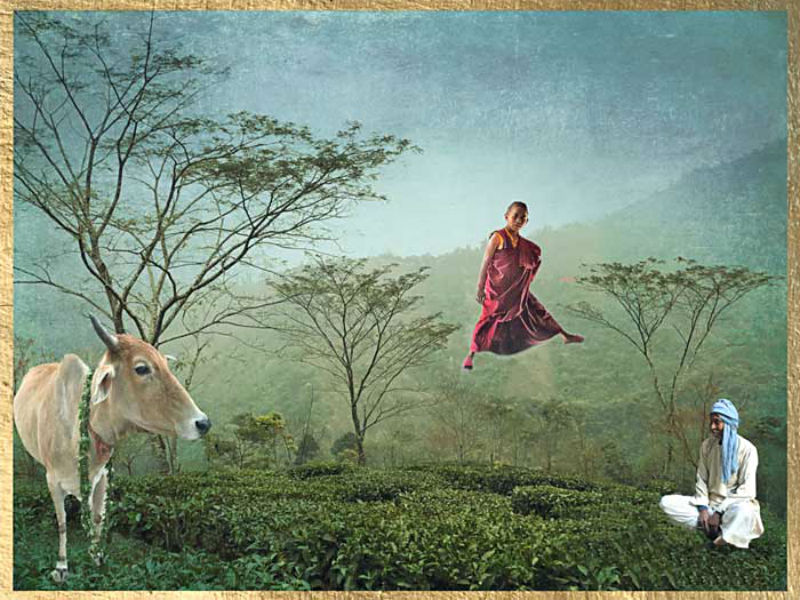Contemporary History: Ann Arbor Art Center's 95th "All Media Exhibition"

The 95th All Media Exhibition marks the continuation of a tradition established in 1922 when the Ann Arbor Art Center was known as the Ann Arbor Art Association. There are 29 artists’ works on display through January 13, with a large portion from Michigan and others from surrounding areas including Illinois, Indiana, New York, Minnesota, Ohio, Pennsylvania, and Wisconsin. The Ann Arbor Art Center’s previous shows have illustrated its commitment to exhibiting an extensive variety of contemporary artwork, and the All Media show is no exception.
Pop-up exhibit "What Were You Wearing?" at UMMA examined sexual assault

The last time I asked myself, “Was it what I was wearing?” was last Friday. I had been eating my dinner at the bar of a local restaurant when a man struck up a conversation with me. Eventually, he made a joke to the bartender about bringing me a “roofie colada.” The bartender responded disapprovingly. Then, the man doubled-down on his joke, adding, “Don’t worry; she won’t remember a thing.” As the evening went on, I couldn’t quite shake that joke. What Were You Wearing? is a pop-up installation that sets out to challenge the idea that sexual assault is somehow about clothing choice. On Monday, Dec. 4, this exhibit was at the University of Michigan Museum of Art, brought there in partnership with the HeForShe student organization.
Craft Services: A peek at Winter Art Tour 2017

For the past few years in Washtenaw County, the second weekend of December has been the time to shop for wonderful handcrafted goods from local artists at pop-ups, craft fairs, and studio shows.
An easy way to find out what’s happening where is to check out the stops on the second annual Winter Art Tour, which takes you to 10 venues across Ann Arbor and Ypsilanti where you can shop handmade goods from over 300 artists during the weekend of Dec. 8-10. There's a passport to get stamped as you visit each of the tour's locations, and if you hit at least four spots, you have a chance to win beautiful handcrafted prizes.
The event features two large craft fairs and several smaller studio sales across Washtenaw County:
Tiny Expo takes place at the downtown Ann Arbor District Library and is an annual holiday fair that features 45 artists and crafters selling their wares in a festive library space. You’ll find things such as jewelry, screen prints, knit goods, candles, kids items, and more. In addition to vendors, this one-day celebration also features Sweetwaters selling beverages and treats, and the Secret Lab will be set up with hands-on activities where you can do some screen printing, letterpress printing, card-making, and pom-pom making. (Dec. 10, 11 am-5:30 pm)
The Riverside Arts Center in Ypsilanti is home to DIYpsi, which hosts 90 vendors of the best in handmade from the Midwest, offering everything from jewelry to cutting boards to homemade peanut brittle. It’s a chance to enjoy handcrafted food and drinks while you get your shop on at this two-day show. New this year will be a make 'n’ take room with family-friendly art projects for all as well as a movie playing on loop at the Film House inside Riverside. (Dec. 9, 11 am-7 pm; Dec. 10, 12-6 pm)
If you’re looking for more art and smaller venues, there are plenty of wonderfully cozy venues on the Winter Art Tour that will be bustling with art and festivities.
The Third Annual Ypsi Alloy Studios Holiday Market and Open House will be hopping over in Ypsilanti. Ypsi Alloy artists will be offering art and gifts for sale from their own studios. Art includes sculpture, woodworking, ceramics, painting, drawing, printmaking, jewelry, housewares, and more. There will be adult beverages and other assorted treats available from Bona Sera. (Dec. 9, 12 pm-7 pm; Dec. 10, 12 pm-7 pm)
One of the three venues in Ypsi is at Baron Glassworks, which will feature live glassblowing demonstrations as well as the chance to shop the work of talented local glass artists for glasses, vases, yard art, ornaments, and more. (Dec. 8, 5 pm-8 pm; Dec. 9, 10 am-6 pm; Dec. 10, 11 am-5 pm)
The Ann Arbor Art Center Holiday Art Shop offers the opportunity to purchase original, handmade works of art. Over the weekend there will also be family friendly make 'n' take art projects. (Dec. 8, 10 am-7 pm; Dec. 9, 10 am-7 pm; Dec. 10, 11 am-6 pm)
Ann Arbor-based Clay Work Studio is hosting its 4th Annual Holiday Pottery Sale. The sale starts Dec. 1 and will last for the entire month of December. The opening reception is on Friday, Dec. 8, 6 pm-8 pm. Join in for live classical music, great hors d'oeuvres, and wine. (Dec. 8, 10 am-8 pm; Dec. 9, 10 am-6 pm, Dec. 10, 12 pm-5 pm)
The Annual Yourist Studio Gallery Holiday Sale in Ann Arbor features ceramic works by Community Studio Resident Artists and select students. The opening gala on Friday night features an evening of holiday conviviality, ceramic art, and festive food and drink. (Dec. 8, 5 pm-8 pm; Dec. 9, 10 am-6 pm; Dec. 10, 11 am-5 pm)
Kate Tremel and Friends Art Studios Sale celebrates its 11th annual sale and features work from six artists, including book arts and ephemera, painted silk and felt wearables, porcelain ceramics and lighting, and handmade chocolates and confections. At this Ann Arbor stop there will also be treats from Roos Roast and Tracklements Smokery. (Dec. 9, 12 pm-5 pm; Dec. 10, 12 pm-5 pm)
Over at Front Porch Textiles in Ann Arbor you’ll find handwoven textiles, yarn, jewelry, woodworking, art tiles, and letterpress art from a variety of local artists. There will also be weaving demonstrations throughout the weekend. (Dec. 9, 10 am-5 pm; Dec. 10, 11 am-5 pm)
Art on Adare! is an annual holiday in Ann Arbor sale featuring multiple fine-art jewelry makers. Stop in at 1510 Kearney Rd., Ann Arbor, for art, wine, cheese, and light refreshments. (Dec. 9, 11 am-5 pm; Dec. 10, 11 am-5 pm)
So, if you’re looking for a unicorn hat, an oversized stuffed squid, a Bruce Springsteen nightlight, or beautiful ceramicware, these 10 magical stops along the Winter Art Tour have you covered with that and so much more.
Amanda Schott is a Library Technician at AADL and loves holiday craft fair season.
Visit winterarttour.com for more information.
Valerie Hegarty's "American Berserk" exhibit deconstructs the gloss of U.S. history

Brooklyn-based artist Valerie Hegarty is known for site-specific installations. For her American Berserk exhibit in the University of Michigan’s Institute for the Humanities Gallery, Hegarty created a rotting watermelon -- which isn't to say she saw the space and thought, "Hmm, this room screams, 'EXPIRED FRUIT.'" Rather, Amanda Krugliak, curator for Institute for the Humanities, suggests Hegarty’s works “speak to the morass, the schism, the cracked facade, and fruit rotten, the flowers drooping.” The tradition of representing fruit on the brink of putrefaction is long established.
Krugliak has also included a variety of sculptures by Hegarty that engage with American iconography, calling it into question and raising suspicions about the stories America tells about its past.
U-M’s event announcement suggests Hegarty has consistently engaged with “fundamental themes of American history and particularly the legacy of 19th-century American art, addressing topics such as colonization, slavery, Manifest Destiny, nationalism and environmental degradation.” Hegarty frequently employs images of George Washington, a symbol of American values, and an excellent example of how American history often glosses over unsavory aspects of its founding fathers’ lives.
The interesting thing about Hegarty’s vision, as Krugliak points out, is that “each work feels steeped in a brew of our collective history, an archive of distorted, iconic American imagery.” While Hegarty’s work represents this familiar American imagery, the icon is always altered. Krugliak gives the example of this alteration, stating that Hegarty’s “seashells and clipper ships begin to morph, strangely animat'ed, sliding to the floor.” The warped seashells are reminiscent of Salvador Dali's work, but as Krugliak suggests, these works are in context of “modern-day folly.”
In her artist’s statement, Hegarty labels the installation process a form of “reverse archaeology,” in which the gallery is transformed by adding and subtracting layers of paint, paper, and epoxy to create a “material memory of a space.” Material memory in relation to space within a museum or gallery setting is already implicit: it is shifting constantly. Hegarty’s frequent employment of stylistic references to early American art in her installations frankly reference and destroy the illusion of reality portrayed by museums, particularly in display practices of American art.

Hegarty employs a multitude of materials in the creation of her sculptures and installations. She has used ceramics (much of the work in the Humanities Gallery is ceramic), wood, paper, and epoxy. One of Hegarty’s signatures is playing with dimensionality and the discrepancy between a flat surface and a 3-D or 2-D object. This generally starts with the idea of the “flat” painting being projected forward into space, sliding off the wall, or apparently melting. In the Humanities’ Gallery, the most striking example of Hegarty’s signature installations is the jutting, 3-D, site-specific sculpture representing George Washington. George is also found represented in modestly sized ceramic topiaries, in which his features are distorted yet recognizable.
Hegarty's title of the show, American Berserk, is a nod to Philip Roth’s Pulitzer Prize-winning novel, American Pastoral. Roth defines the Berserk as the inverse of the American pastoral ideology. This installation is a “restaging” of the original show that contained these works, held at Burning in Water Gallery in New York, 2016. On her website, many of the works can be seen as they were in the 2016 installation. These images on her website illustrate the differences in each site-specific work. For example, in both 2016 and 2017 she created the George Washington painting, which a tree branch extending from the wall is impaling. The branch simultaneously punctures the “canvas” and becomes an extended nose, referencing Pinocchio, the liar, suggesting the iconic founding father’s wrongdoings.
Additionally, the installation at the University of Michigan’s Humanities Gallery differs from the original in that it appears more dramatic, the branches appearing to have done more damage to the wall. Though the artist’s intervention in the space is not as grand as some of her past installations, the work of art disrupts the normative gallery space. This, paired with the unsettling nature of the works themselves, creates a critique not only of American history and early American art but the practices continuously embraced by museums in displaying these works of art.
Elizabeth Smith is an AADL staff member and is interested in art history and visual culture.
Valerie Hegarty's "American Berserk" is on display at University of Michigan’s Institute for the Humanities Gallery, 202 S. Thayer, through Dec. 21. Gallery hours are Monday through Friday 9 am to 5 pm. Free. For more information, visit ns.umich.edu.
Look Deep: John Lilley's “Wandering Around … in black and white” at Kerrytown Concert House

We last saw John Lilley’s photography at the Kerrytown Concert House in June 2012. His John Lilley Photographs exhibition found the Dexter photographer using digital color notable for its exhilarating chromaticity as well as its remarkable penchant for detail.
“Simply put,” said Lilley at that time, “I make photographs because I see photographs.”
But as he later tellingly added in that statement, “I’m rarely attracted to the 'big picture.' Rather, my vision is almost unconsciously drawn to distinct designs, textures, and forms that occur as small subsets of the broader landscape. I’m fascinated by the myriad possibilities for abstract composition that exist in our world.”
All of which is to say that Lilley’s current Wandering Around … in black and white shows us that his monochromatic photography is easily the equal of his color work. Indeed, if anything, Lilley’s photographic self-discipline is as much (if not more) vivid than his color art.
The work in this exhibit dates back to the 1970s, from using old-school analog photographic technology right up through contemporary digital work recently executed. None of the photos are dated, which creates a chronological ambiguity that forces the viewer to focus on the art rather than try to trace Lilley’s artful development. This strategy effectively makes each work an equal among equals.
As he says in his most recent gallery statement:
The American Road Trip is, for me, the activity of simply wandering from place to place. I’m not sure if the road trip is an excuse for photography, or if photography is my excuse for the road trip. Whichever it is, the traveling about is an opportunity to see what’s out there, to discover new places and the things that inhabit those places and spaces. When I’m on the road with my cameras I’m totally focused on the undivided landscape. I try to see into that landscape as deeply as I can.
Right said: What’s best about this self-description is that this “seeing” is precisely what Lilley does best. And how he sees -- as much as what he sees -- is what makes his exhibition a superior display of art.
This may be because black and white images tend to appear ageless. There’s often a subtle chiaroscuro tincture that ironically reveals more nuance than the color we would normally see around us. This monochromic shading makes it difficult to date the work because of the composition’s play of light and shadow.
As such, black and white photography is often more dramatic than color photography because of this psychological remove. There’s a nebulous gravity running through the photographs in Wandering Around in Black and White that contrast heartily to the vibrant color patterns of Lilley’s color photos.

Likewise, it’s interesting that one of the more stunning works in the 25 photographs on display is magnificently large-scale if there ever was a “large-scale.” Because for someone who says he’s not looking for the “big picture,” Lilley’s Devils Lake, North Dakota sure looks big enough.
Photographing an aged building next to a silo, Lilley’s Devils Lake is simultaneously a big picture and nuanced study. Shrewdly referencing a touch of early 20th century American Precisionism, the aged architectural structures in the photograph have a gritty integrity that can’t be missed. Lilley expertly captures these structures rectilinear façade with its complex horizontal and diagonal gradation to illustrate each striated scuff that marks its history.
On the other hand, Lilley statement implicitly references “road trips” and other such places --
and what could be more other than landscape photography? His Sand Dunes, Early Morning: Great Sand Dunes NP, Colorado certainly fits this bill. A striking crosswise depiction of nature in its harsh environment, his depiction of this national park is surprisingly serene for such a terrain.
The vista is grandly impressive -- and there can be no denying this fact -- yet Lilley’s judgment softens the environment’s austerity through the adroit manipulation of light and shadow. Really no more than a series of receding sand dunes whose alternation of light and dark creates an internal harmony of visual alliteration, Sand Dunes, Early Morning's interspersed rhythmic contemplation carries the viewer’s eye well beyond the desert horizon.
Yet perhaps the hardest trick for any art photographer using black and white is to craft silhouettes of such a sharp disparity that the precise tonal juxtaposition supplies the entire information one needs to take the measure of the composition. Lilley’s Wires: Concordia, Kansas is easily the masterwork in the exhibit for this reason.
Wires features a black and white contrast that’s startlingly pure in its monochrome articulation. As inspired as it is spare, two supporting triangles (of whatever origin) suspend a tangle of irregularly coiled curvilinear wire through an eye hook bolt in what amounts to a compositional limbo. Lilley dispenses with any semblance of depth in favor of a paradoxical black and white curvilinear and rectilinear abstraction whose precise difference lets the work’s geometric elements hover on the photograph’s foreground. It’s a satisfying inner tension that allows his viewer’s eye to wander as restlessly as does his camera.
John Carlos Cantú has written on our community's visual arts in a number of different periodicals.
John Lilley's “Wandering Around … in black and white” runs through Dec. 3 at Kerrytown Concert House, 415 N. 4th Ave, Ann Arbor. The exhibit is available 9:30 am-5 pm, Monday-Friday, during public concerts, and by appointment. For information, call 734-769-2999 or visit kerrytownconcerthouse.com.
Pop-Up Patriarchy: "WORLD LEADERS" exhibition by Chanel Von Habsburg-Lothringen

The University of Michigan Institute for the Humanities’ pop-up exhibition WORLD LEADERS showcases the work of photographer Chanel Von Habsburg-Lothringen. She has an MFA in photography from Cranbrook Academy of Art and a BA in social science and history of art from the University of Michigan. Currently based in Los Angeles, Von Habsburg-Lothringen has curated projects at Los Angeles Museum of Art, Detroit Design Festival, the Mike Kelley Mobile Homestead, and Cranbrook Museum of Art.
The exhibit consists of one large photograph, printed on a vinyl banner, and hung on the back wall of the common room, adjacent to three small, framed still-life photographs of presumably designer clothing. The exhibition announcement states that Von Habsburg-Lothringen’s newest series, Conditions, “continues to examine the position of the woman in neo-liberal society as both object and agent. It reflects on the slippage between aspiration and desperation in the face of the vanishing American Dream.”
trustArt Gallery's "Studio Works" exhibit encourages community engagement

The trustArt Gallery's Studio Works exhibition (Nov. 11-19) will display multi-media works by artists and designers who work in rented studios at the venue. The exhibit features works by Larry Cressman, Liz Davis, Elizabeth Barick Fall, Rose E. Gomez, Barbara Hohmann, Allen Samuels, Laura Shope, and Lissie Williams, and it also offers an intimate look into the studio space and how it relates to the artists’ practices and everyday environments.
In addition to the more common gallery exhibition, the added opportunity to see the artists’ studios and working spaces aims to create community engagement with the arts, according to trustArt Gallery's statement: “We are connected through our location and environment as we pass through the shared open space of our gallery: it provides an opportunity to intersect; to cross paths; a place for our studio works to be shared and reflected upon; a chance to interact with each other and the community.”
The opening-up of studios to the community will allow for many people to interact with art and art making in an expanded capacity. It allows unique insight into aspects of the creative process and creates a chance for discussion and dialogue between the artist and the community.
Featured artists/designers:
Photographer Nina Hauser dreams of India in her new WSG Gallery show

The last time we saw Nina Hauser’s iPhone photography at the WSG Gallery was in May 2013. I was keenly struck at that time how her display illustrated the fundamental principle that the human element cannot be taken out of art irrespective of the technology used to make the work. The 22 photographs in that exhibit were marked by a remarkable technique and skill -- with both artful elements reflecting the “eye” implicit in the photographic image.
Hauser’s current exhibit at that same gallery, The Real World Is Not the Only World -- India Dreams, finds this local photographer immersed in her fascination with the culture of the Asian subcontinent -- and certainly sufficiently enough as to revolutionize her aesthetic.
Ann Arbor Art Center's "Millennial Pink" explores a generation through color

What, exactly, is “millennial pink”?
This term is now used to identify the aesthetic of an entire generation, the often-reviled millennial. This generation is defined as being born between 1981 and 2001. Whether you love or hate millennials, the color pink, or the term “millennial pink,” this exhibition delves into many issues at the forefront of contemporary cultural discussion.
The Millennial Pink exhibition is comprised of multi-media arts and will be on display at the Ann Arbor Art Center through Nov. 4. Artists in the show explore a variety of themes, including “gender identity, pop culture, sexuality, politics, and shades of Pantone pink.”
Technological Delineation: "Moving Image: Portraiture" at UMMA

Moving Image: Portraiture at the University of Michigan Museum of Art aims to address portraiture through the lens of contemporary media. As the third and final component of a series drawn from the Borusan Contemporary collection in Istanbul, including Moving Image: Landscape and Moving Image: Performance, each of the three artists included in this small exhibition uses technology to convey complex ideas, not only about the history of portraiture and representation but how technology can change our ideas of what constitutes portraiture.


































